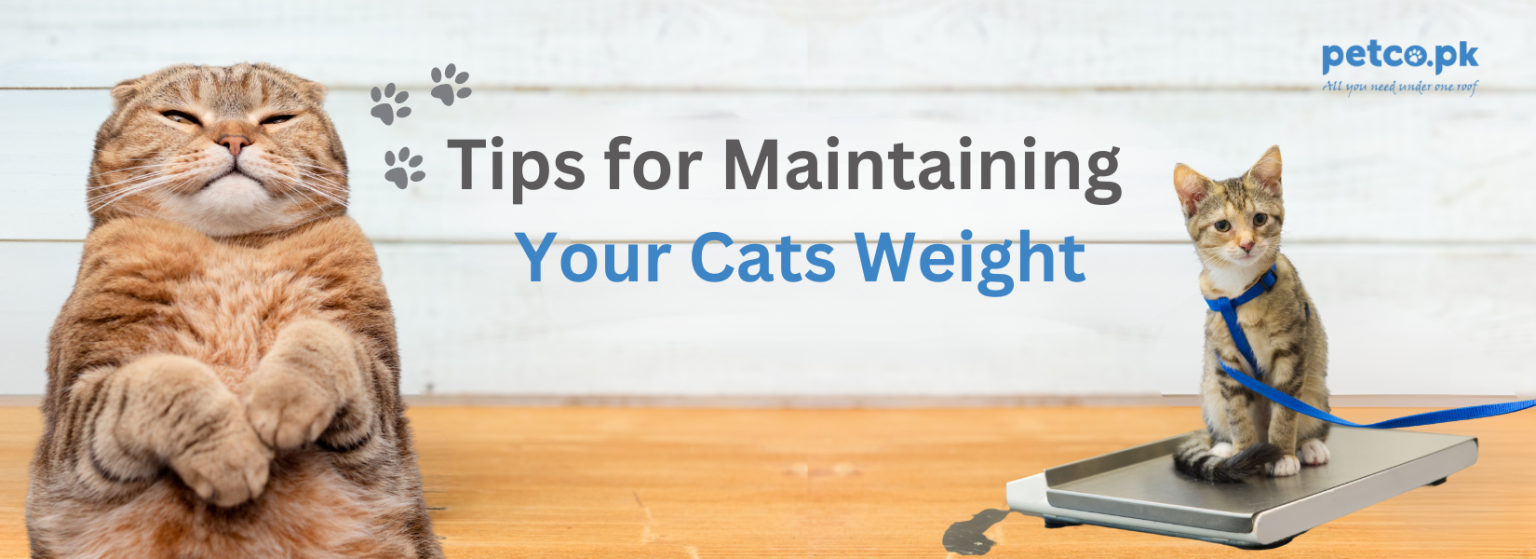Maintaining your cat’s healthy weight is crucial for their overall well-being and longevity. Obesity in cats can lead to various health issues, including diabetes, arthritis, and heart disease. By following the tips below, you can ensure your feline friend stays at a healthy weight and enjoys a long, happy life.
Understand Your Cat’s Ideal Weight
Before you can maintain your cat’s healthy weight, it’s essential to know what their ideal weight should be. Cats come in various breeds and sizes, so there isn’t a one-size-fits-all weight. Consult your veterinarian to determine your cat’s ideal weight based on their breed, age, and overall health. Regular veterinary check-ups can help track your cat’s weight and identify any potential issues early on.
Provide Balanced Nutrition
A well-balanced diet is key to maintaining your cat’s healthy weight. Cats are obligate carnivores, meaning they require a diet rich in animal protein. Choose high-quality cat food that lists meat as the primary ingredient and is formulated to meet your cat’s nutritional needs. Avoid feeding your cat excessive treats or human food, as these can contribute to weight gain.
Wet vs. Dry Food
Wet and dry cat foods have different benefits. Wet food generally has fewer calories and more moisture, which can help keep your cat hydrated and feel fuller with fewer calories. Dry food, on the other hand, is more calorie-dense, which can make it easier to overfeed. Consider incorporating both wet and dry food into your cat’s diet in appropriate portions to maintain a healthy weight.
Monitor Portion Sizes
Overfeeding is one of the most common causes of obesity in cats. It’s easy to give in to those pleading eyes, but it’s important to stick to recommended portion sizes. Follow the feeding guidelines on your cat food packaging, but also adjust based on your cat’s activity level and metabolism. Measuring your cat’s food with a kitchen scale or measuring cup can help ensure you’re not overfeeding.
Free Feeding vs. Scheduled Meals
Free feeding, or leaving food out all day, can lead to overeating and weight gain. Scheduled meals, on the other hand, allow you to control portion sizes and monitor your cat’s food intake more closely. Feeding your cat two to three times a day is usually sufficient, but consult your veterinarian for the best feeding schedule for your cat’s needs.
Encourage Regular Exercise
Just like humans, cats need regular exercise to maintain a healthy weight. Encourage your cat to stay active by providing toys that stimulate their natural hunting instincts, such as laser pointers, feather wands, or interactive toys. Regular play sessions, even if just for 10-15 minutes a couple of times a day, can help burn calories and keep your cat fit.
Create an Engaging Environment
A stimulating environment can encourage your cat to be more active. Provide climbing structures, such as cat trees or shelves, to encourage jumping and climbing. Puzzle feeders can also make mealtime more engaging and require your cat to work for their food, promoting both mental and physical activity.
Monitor Weight Regularly
Regularly monitoring your cat’s weight can help you catch any changes early and adjust their diet or exercise routine accordingly. Weigh your cat at least once a month using a pet scale or by weighing yourself while holding your cat and subtracting your weight. If you notice significant weight gain or loss, consult your veterinarian to rule out any underlying health issues.
Track Body Condition Score
In addition to monitoring weight, keep an eye on your cat’s body condition score (BCS). The BCS is a visual and tactile assessment of your cat’s body fat and muscle. A healthy cat should have a well-proportioned body with ribs that are easily felt but not visible, a visible waistline when viewed from above, and a slight tummy tuck when viewed from the side. Your veterinarian can help you determine your cat’s BCS and provide guidance on maintaining it.
Limit Treats and Snacks
Treats can be a significant source of extra calories, so it’s important to limit how many you give your cat. When you do offer treats, choose healthy, low-calorie options, and ensure they make up no more than 10% of your cat’s daily caloric intake. Consider using small portions of your cat’s regular food as treats, or opt for catnip or interactive playtime as a reward instead.
Address Underlying Health Issues
If your cat is struggling to maintain a healthy weight despite your best efforts, there may be an underlying health issue at play. Conditions such as hyperthyroidism, diabetes, or arthritis can affect your cat’s weight and overall health. Regular veterinary check-ups are essential for diagnosing and managing these conditions. Your veterinarian may also recommend specific dietary adjustments or medications to help manage your cat’s weight more effectively.
Be Patient and Consistent
Maintaining your cat’s healthy weight is a long-term commitment that requires patience and consistency. Weight loss or gain should be gradual to avoid putting stress on your cat’s body. Sudden changes in diet or exercise routines can also be harmful, so it’s important to make adjustments slowly and under the guidance of your veterinarian. Stick to a regular feeding and exercise schedule, and don’t be discouraged by minor setbacks.
Celebrate Successes
When your cat reaches or maintains a healthy weight, take the time to celebrate! A healthy weight contributes to your cat’s overall well-being, energy levels, and quality of life. Keep up the good work, and continue to monitor and adjust your cat’s routine as needed to keep them at their best.
Conclusion
Maintaining your cat’s healthy weight is essential for their long-term health and happiness. By providing balanced nutrition, controlling portion sizes, encouraging regular exercise, and monitoring their weight, you can help your cat live a long, healthy life. Remember to consult your veterinarian for personalized advice and to address any health concerns that may affect your cat’s weight. With patience and consistency, you can keep your feline friend in top shape for years to come.




